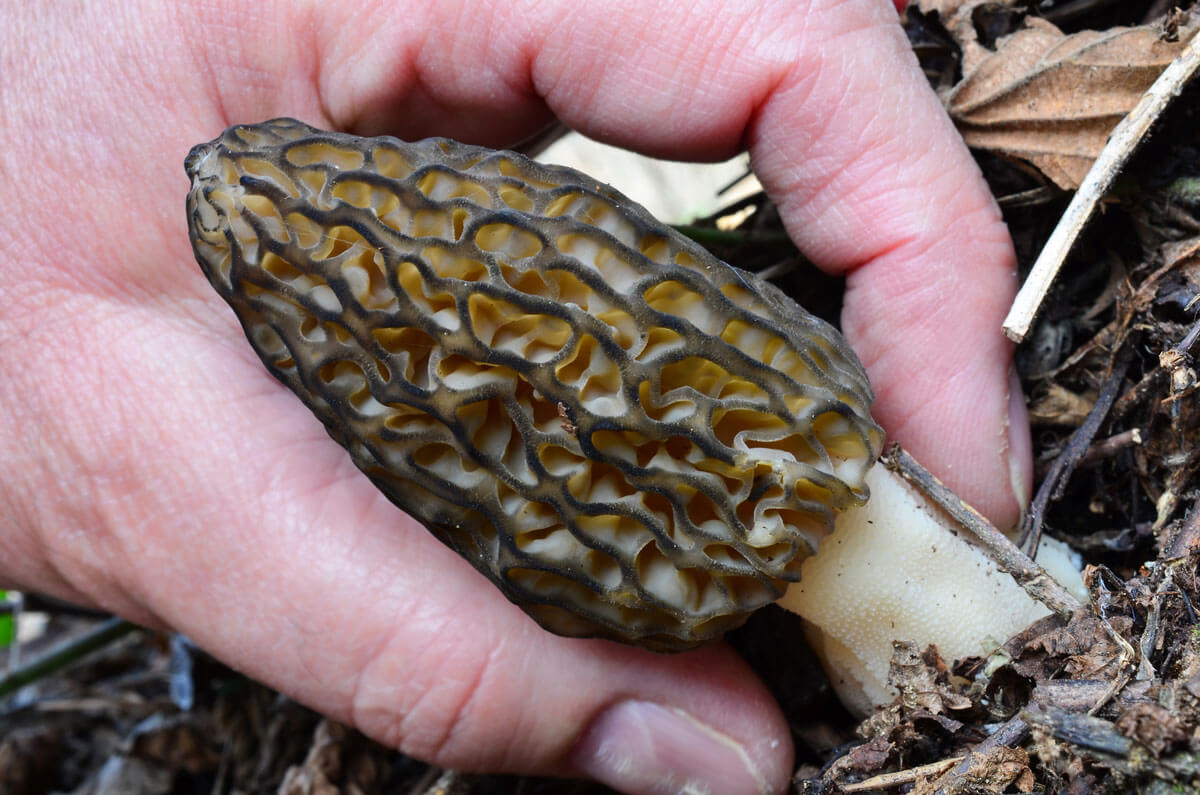Foraging for wild edibles is an art that our ancestors knew of and practiced. Not only can you find the most delicious ingredients, but it could very well save your life if ever needed. While I’m a firm believer in growing a year’s worth of food and preserving as much of that as possible, there is beauty in being able to go out and harvest something God provided without any help or work on our part via foraging.
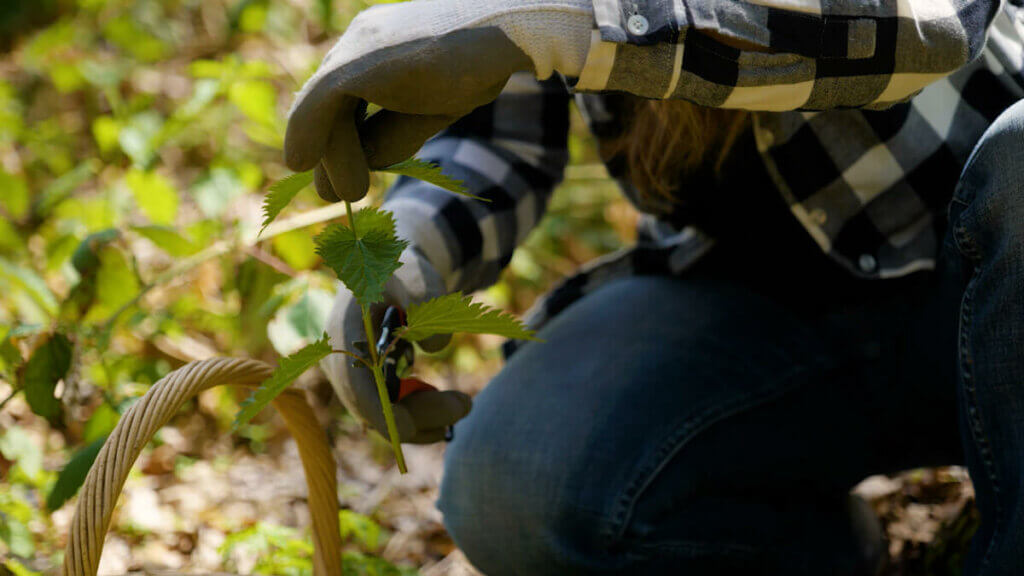
From a preparedness standpoint, knowing how to identify and properly harvest and prepare wild edibles means you’ll be able to feed yourself (and your family) if ever the need arises.
In this post (and podcast interview), we’ll be discussing some common foraging basics to keep you safe, as well as some basic mushroom identification tips you’ll want to study before you go out foraging.
This post was originally published with Pioneering Today Podcast episode #66, Five Rules for Foraging Wild Edibles, but has since been updated with my interview with Whitney Johnson, the Appalachian Forager all about foraging basics and mushroom foraging tips.
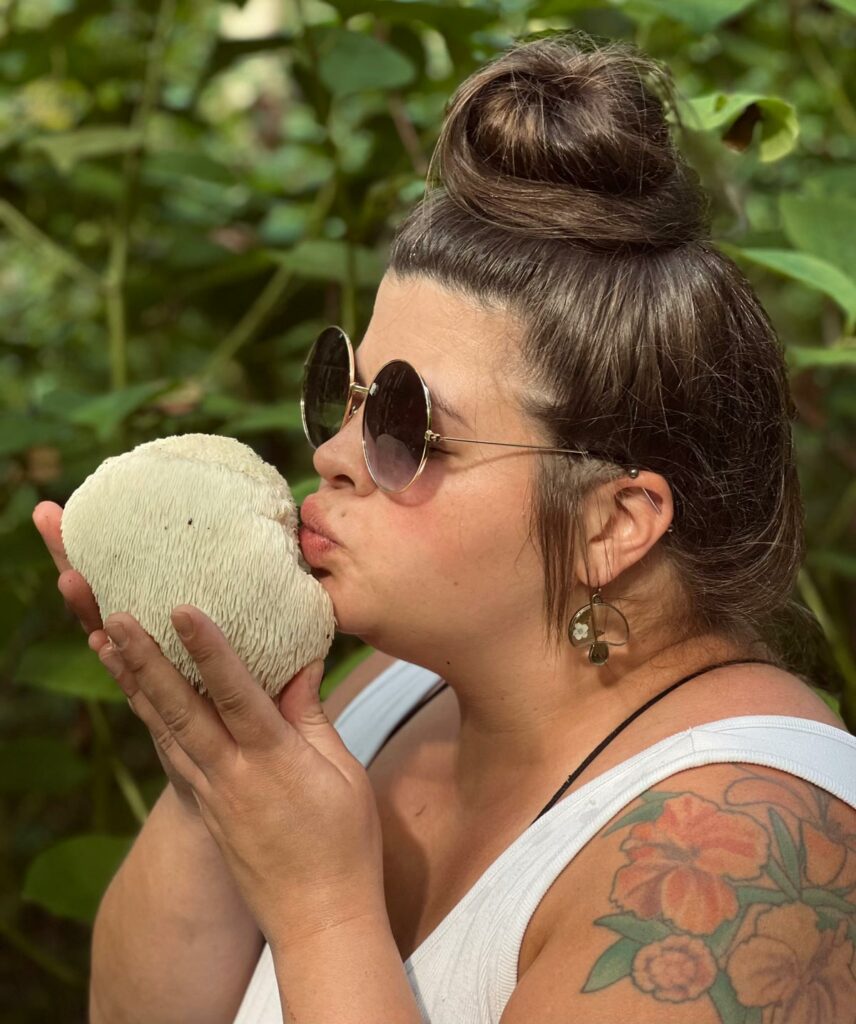
Table of Contents[Hide][Show]
About Whitney
Whitney is a full-time forager, content creator, published author, and Appalachian ambassador. With over 1.5 million followers across her social media, she has used her platform to shine a lovin’ light on Appalachia and to teach the world how to be more self-sufficient while responsibly utilizing the goodies that Momma Nature provides.
Born and raised in eastern Kentucky, she developed a passion for all things outdoors as a young holler baby. Foraging is her forte, especially mushroom hunting, but she does not discriminate against any wild edibles.
She also picks plants and herbs to wildcraft a plethora of skincare and wellness products. She fishes, hikes, gardens, and cooks like your mamaw. Whitney is also a proud Appalachian, spreading the love and wondrous things the region has to offer via her down-to-earth, educational, and quirky videos on social media.
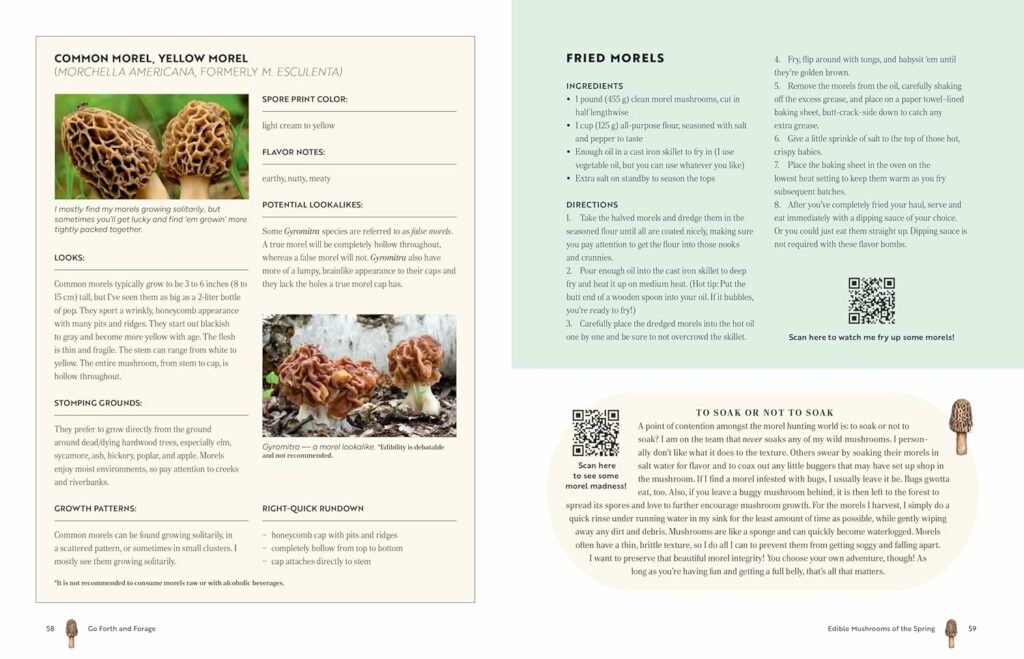
Rules of Foraging for Wild Edibles
Make Sure It’s Safe
Foraging is simply going out into nature and gleaning wild edibles for food. However, there are a few rules we need to follow. As wonderful as it is, it can also be dangerous if you don’t know what you’re doing.
The first rule of foraging is only forage for food that you know for certain is safe. Foraging is not the place to be a rebel or take risks. There are poisonous plants out there, and some have lookalikes.
A field guide with photos is an excellent place to start, especially one that lists the poisonous lookalikes, such as this Field Guide to Edible Wild Plants, which includes drawings and photos to help you make positive identifications.
For mushrooms, I highly recommend grabbing a copy of Whitney’s mushroom foraging book, Go Forth and Forage. I had the book lying on the counter, and my husband came by and started flipping through it. He was very impressed and eager to get out and find even more wild mushrooms this year!
Pro Tip: While a field guide is all well and good, there’s nothing like having a knowledgeable person take you out into the field for a hands-on lesson. I’m fortunate enough that my family has been foraging for generations where we live, and we’ve been harvesting and preparing them since I was born.
It’s a family tradition I’m very grateful for, and we’re passing it down to our children. It’s a favorite family pastime. You can learn how to forage for morel mushrooms and how to forage wild medicinal herbs.
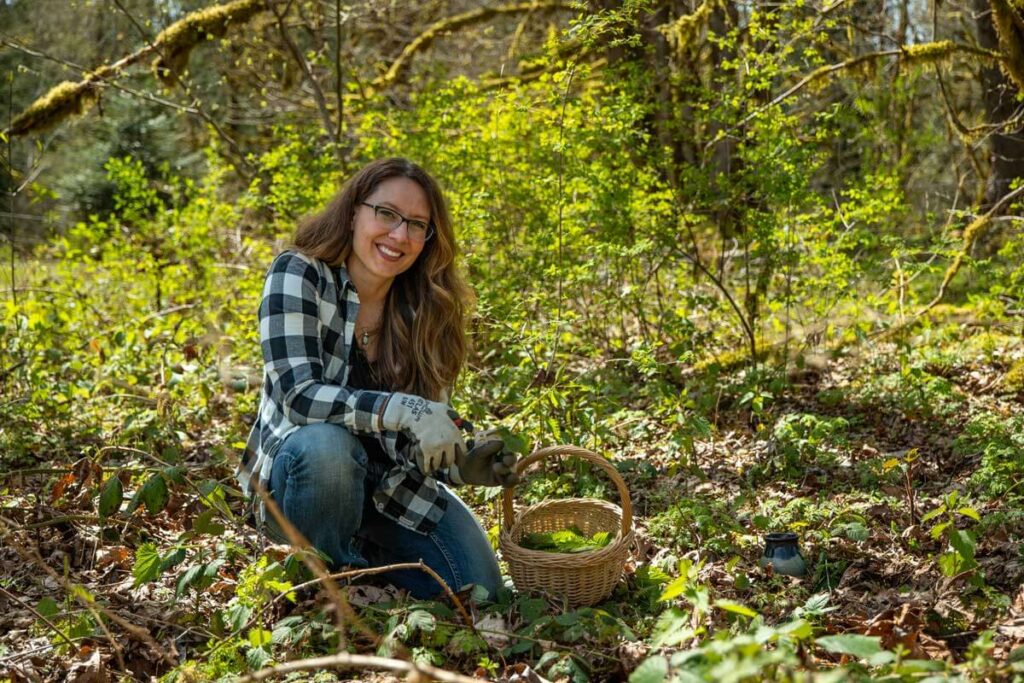
Know the Location
It’s important to forage for food only in a safe area, away from industrialized areas or places that may have been sprayed.
Some examples of places to avoid are:
- Roadways – Avoid anything near a roadway, as this is not a good candidate for foraging. In many cities, the roadsides are sprayed with weed killer, or the roads could have been sprayed during the winter with ice melt.
- Railways – Avoid foraging near a railroad as there’s a chance it could be sprayed, but furthermore, we want to avoid foraging for food near creosote-soaked rail ties.
- Industrial Zones – Avoid areas where there could be chemical pollutants in the air or groundwater.
- Private Property – Make sure to know if the area you’re foraging is public land or private property. We don’t want to make any enemies while foraging for wild edibles.
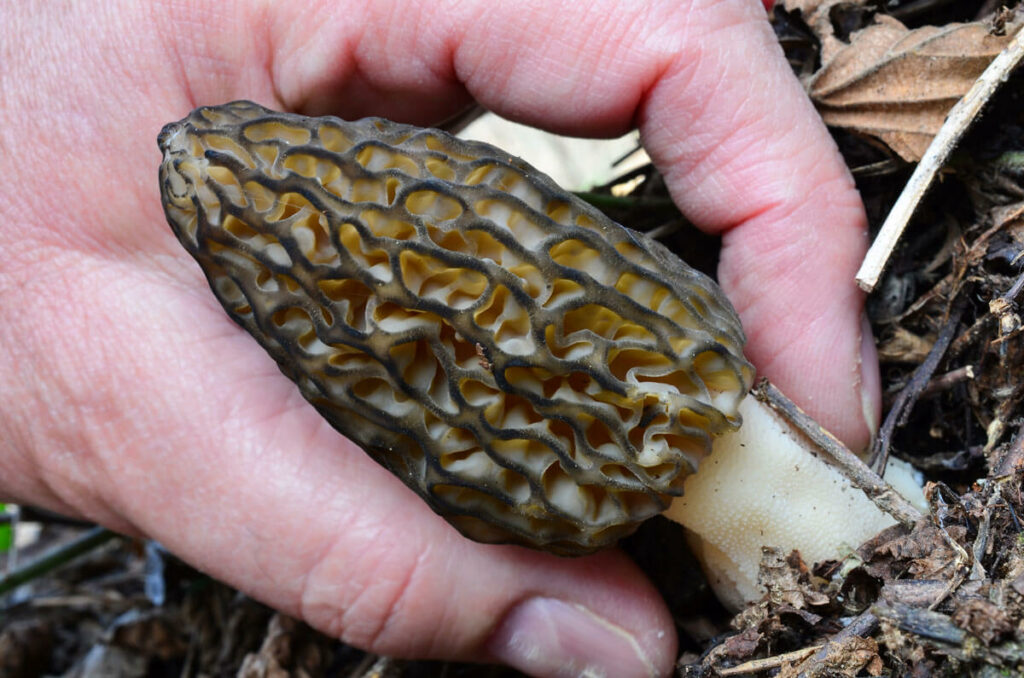
Be a Good Steward
If you’re foraging on private property, be sure to get the owner’s permission first! We should all be neighborly and not take advantage of private land.
Furthermore, be sure to leave the property as you found it. If gates are closed, leave them that way. If they’re open, leave them that way.
Also, know enough about the plant to avoid wiping it out. Obviously, things like dandelions aren’t going to be endangered from overforaging in a field or yard. However, if you’re picking morel mushrooms (learn where to forage morel mushrooms here), then you know you should always leave part of the stem in the ground to produce spores for next year’s crop.
It’s also smart to store harvested mushrooms in a breathable mesh bag so spores can be distributed as you hike around to populate new areas. This also helps keep your mushrooms from sweating. Pro Tip: Whitney’s favorite mushroom harvesting knife comes with a brush on the end, and she says it’s a game changer for cleaning up the mushrooms during harvest to make it so simple once you get home.
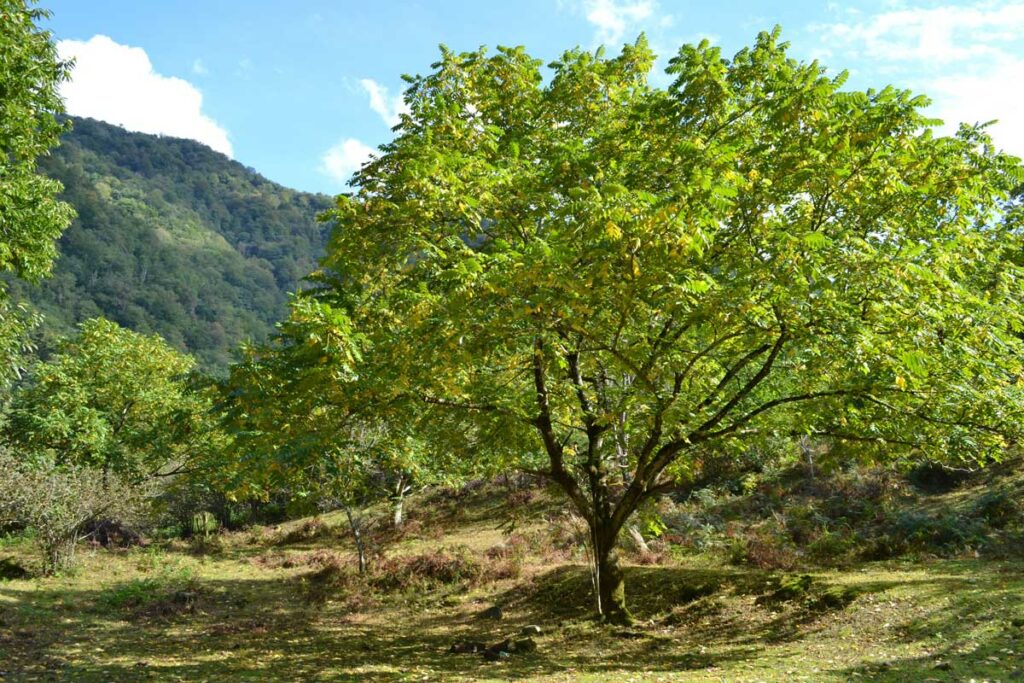
Know Your Trees
Being able to identify certain varieties of trees can greatly help when foraging for mushrooms. This is the first tip that Whitney tells people who want to get started foraging for mushrooms.
There’s a mycorrhizal relationship between mushrooms and trees. Therefore, you can start to learn which variety of mushrooms and which varieties.
For example, morels are generally found around cottonwoods in the Pacific Northwest, while morels hang out around sycamore and slippery elm trees in Appalachia. If you’re planning to go forage for morels, you’ll want to know where these trees grow.
Whitney shared that chanterelle mushrooms grow great around beech or elk forests in the Appalachia or hemlock trees in the Pacific Northwest.
To learn more about tree identification, you can pick up a regional field guide or learn some basic tree identification skills online (Whitney recommends Adam Harrison’s YouTube channel, Learn Your Land and check out his Trees in All Seasons tree identification course).
You could also download and use the app Picture This to help with tree identification.

Know How to Prepare Wild Edibles
Beyond foraging for wild edibles, you need to know the proper and safe way to prepare your them. For example, you should never eat wild mushrooms raw. You should always thoroughly cook them to kill any bacteria that may be on them.
For some wild edibles, the fruit is safe to eat, but the leaves are not (e.g., rhubarb). Other plants, such as elderberries, have toxic berries when consumed raw, but when cooked into an elderberry syrup, they’re packed with healing properties.
You can learn how to grow elderberries from cuttings here, how to grow and care for elderberries here, and how to prune elderberries here. Then, learn about these 25+ ways to use elderberries.
Whenever you’re preparing a new foraged edible, use a reliable recipe for cooking and eating instructions.
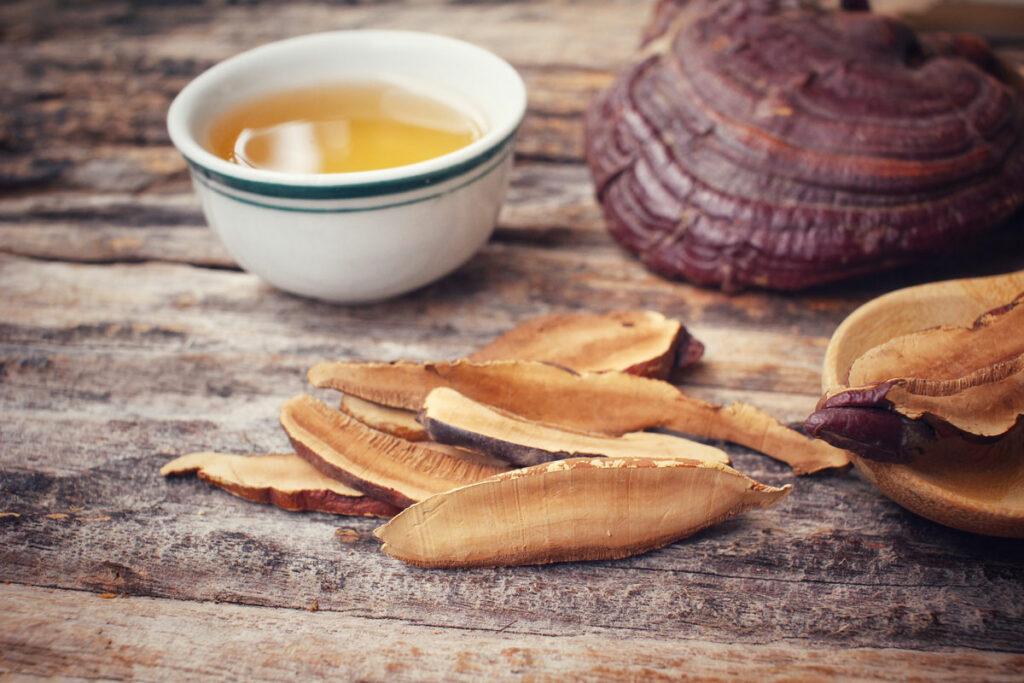
Test a Small Amount First
When you’re ready to enjoy your wild edibles, don’t dive in and eat a huge amount your first time out. Prepare a small portion and eat a few bites to see if you have a reaction. Even though it may be a perfectly safe wild edible, you could unknowingly have an allergy to it.
For example, plantain is considered an excellent herbal remedy, but my mother is allergic to it. So start small, make sure you don’t have any reactions, and then go for the gusto.
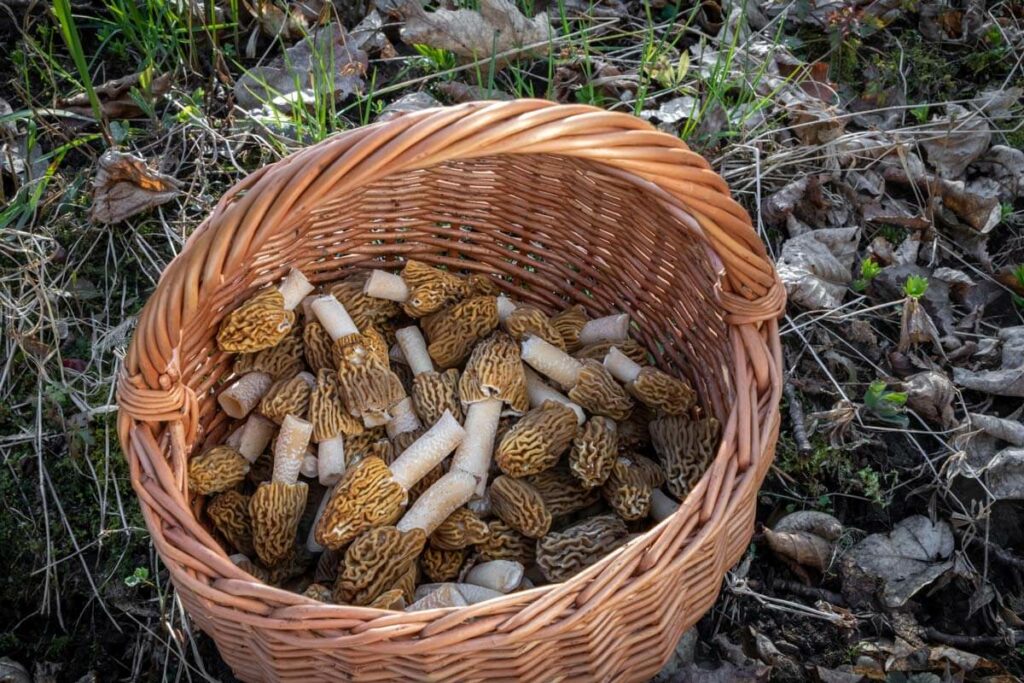
Wild Edibles to Forage For
Here is a list of wild edibles you can forage for and a link for more information.
- Asparagus – We foraged for wild asparagus and canned up over 25 quarts of pickled asparagus.
- Autumn Olive Berry – These berries are great for both sweet and savory dishes and come from the autumn olive tree.
- Cattails – Easy to identify and a major wild food source. Every part can be used in some helpful way, which is really awesome.
- Chanterelle Mushroom – One of the most famous of all the wild edible mushrooms, golden chanterelle mushrooms are easy to hunt and identify after you know them.
- Chicory – Makes a fantastic coffee substitute!
- Chickweed – This is the second plant I ever learned how to forage. It’s a dainty little plant with white flowers. It’s a tasty addition to salads or used as an herbal garnish (similar to parsley).
- Chokecherries (not chokeberries) – Chokecherries are just one of several small-fruited, edible cherries. They grow as medium sized trees, or more often, as multi-stemmed shrubs.
- Dandelion – Though just a weed to many, dandelion can be used for food or medicine. My favorite is to eat the greens in a salad and make a dandelion healing balm.
- Elderberry – One of my favorites. So much so that I’ve been taking cuttings and planting more and more around my property.
- Field Pennycress – “This plant is sometimes cultivated as a food crop in Europe. There has been some research done on the potential of field pennycress as a biofuel.”
- Garlic Mustard – This is a cruciferous vegetable, but most recognize it as an invasive weed.
- Japanese Knotweed – Also known as an invasive species. Yet it’s edible and makes a tasty juice for cooking!
- Hawthorn Berry – Hawthorn should not be used if you’re on any kind of medication for your heart. Otherwise, it’s great for making tea or jelly.
- Hazelnuts – If you happen upon a hazelnut tree, you’re in luck! These are some of the most delicious nuts, but they do require a bit of work to dry and shell.
- Hickory Nuts – Also known as pecans. With a bit of tree identification skills, you should be able to locate a tree near you!
- Juniper Berries – Commonly known as being a spice or being the flavoring for gin, they have many other uses as well! Foraging for juniper berries is easy, as juniper trees are fairly common.
- Lambs Quarters – One of the first edibles we can forage for in early spring! It can be used like spinach (but has even more nutritional benefits).
- Lion’s Mane Mushroom (similar to Bearhead’s Mushroom) – This is one of the more interesting-looking types of mushrooms. In place of the traditional mushroom cap is a large clump of teeth, which are spine-like structures a few millimeters long.
- Lobster Mushrooms – “Lobster mushrooms are really cool looking, and unmistakable once you know what they look like. They are most often found in the fall after the rains come, but in some areas can be found in the summertime as well.”
- Miner’s Lettuce – “Miner’s lettuce is a wild-growing edible weed that is highly nutritious. Also known as claytonia or “winter purslane,” this plant is loaded with vitamin C and minerals and has medicinal properties. Plus, miner’s lettuce is a delicious addition to salads and soups!”
- Morel Mushrooms – These were the first things my father taught me how to forage, and I taught my children.
- Nettle Leaf – This is found all over the place in the Pacific Northwest. I love using it for tea.
- Oregon Grape – The Oregon grape isn’t technically a grape at all but a bush in the barberry family that has edible berries and medicinal properties.
- Purslane – “Native to India and the Middle East, purslane now grows around the world, including the United States.”
- Rose Hips – Not all roses produce rosehips. Many of the more popular roses have been modified for the hips to be bred out!
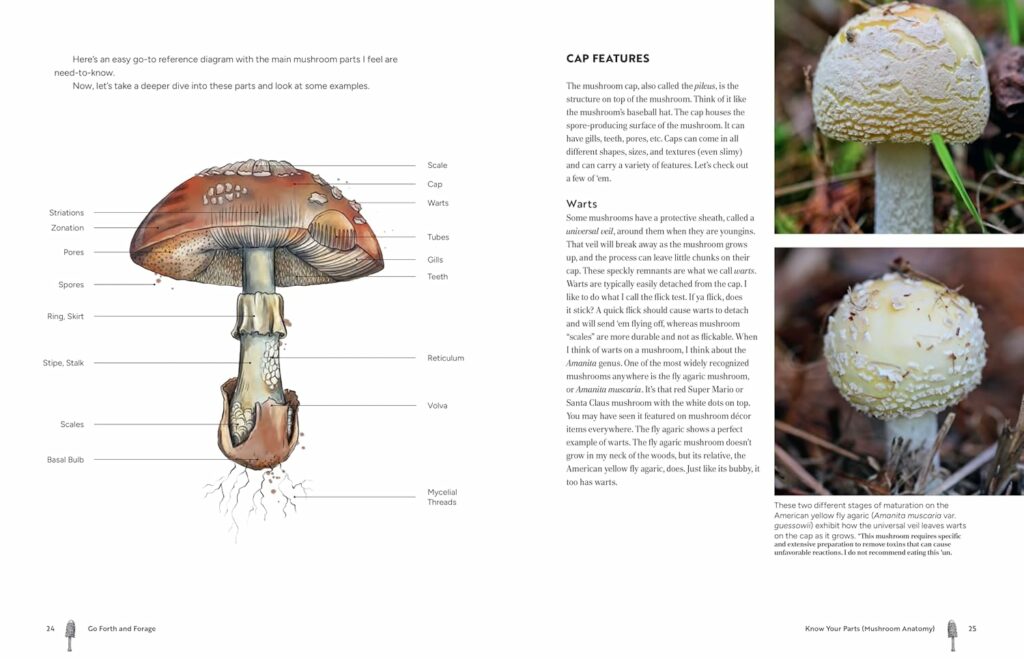
Mushroom Identification
There are many parts to a mushroom, and each part of the anatomy is important to understand because it can help differentiate a safe mushroom from a harmful one.
You’ll want to know how to identify the mushroom’s:
- Cap -This is the top portion of a mushroom, similar to a baseball cap. It can come in all shapes and sizes and houses the spore-producing surface.
- Spores – These are essentially the mushroom “seed” or “eggs” that will produce future mushrooms.
- Spore Producing Surface – This can come in many types. Some are gills (which look like vertical pieces of paper), pores, or polyporous. This goes much deeper, and you can learn more from Whitney’s book!
- Stem – This is pretty self-explanatory, but it’s the shaft-like structure that holds the mushroom up from the soil (if present). Certain varieties don’t have a stem that’s present.
- Stem Feature – Certain varieties also have unique features that will show up on the stem, such as a skirt, ring or annulus.
Knowing how to look for these various features on a mushroom can help keep you from harvesting and consuming something you shouldn’t be eating!
Furthermore, knowing what mushrooms should look like at their pique time to harvest can also keep you from harvesting a mushroom that’s way past its prime.
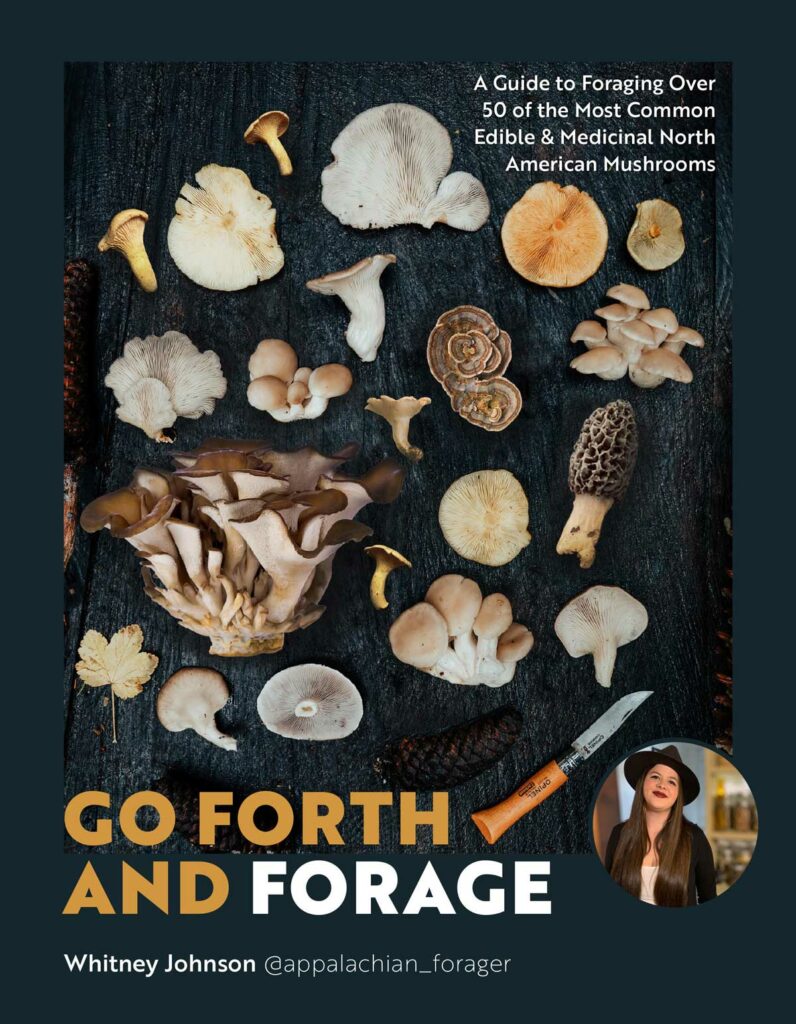
Where to Learn More
I highly recommend you check out Whitney’s book, Go Forth and Forage as well as her social media accounts. She shares so much wisdom (and hilarious posts) on Instagram, Facebook, TikTok and YouTube. You can also check out her website, Appalachian Forager.
More Posts You May Enjoy
- Foraging for Wild Medicinal Herbs
- Where to Find Morel Mushrooms
- Stinging Nettle Benefits (Foraging & Preserving)
- Purple Dead Nettle – Foraging, Medicinal, and Cooking Guide
- Health Benefits of Mushrooms (What You Need to Know)
- Silvopasture and Co-grazing for Sustainability and Productivity
- Morel and Asparagus Quiche
